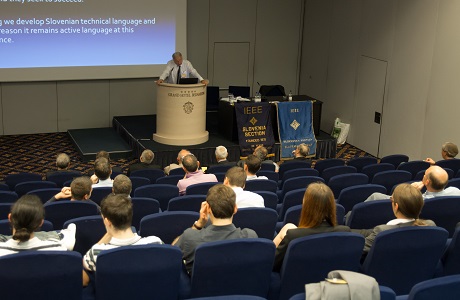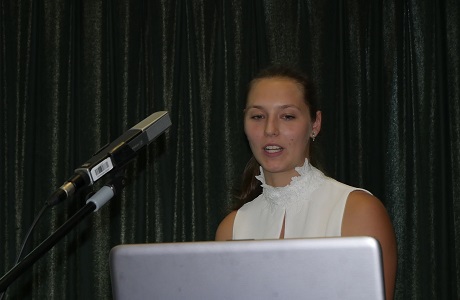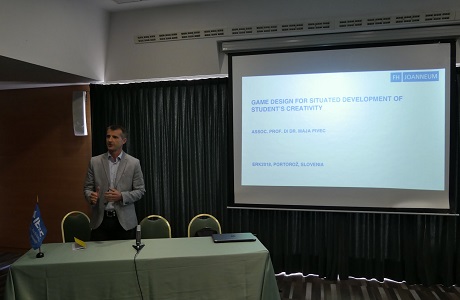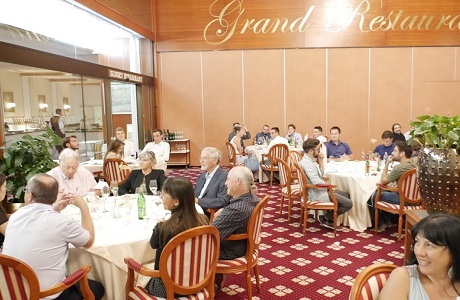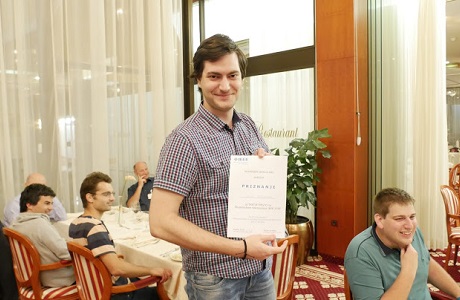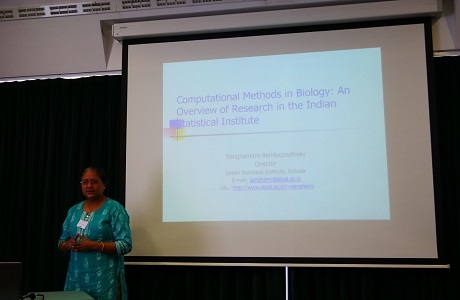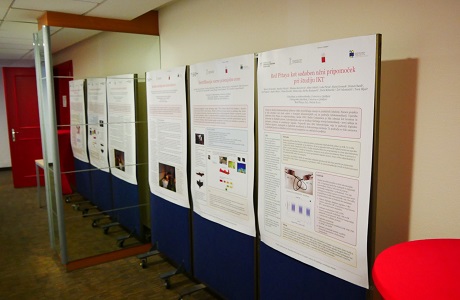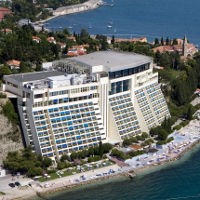Call for papers: 31st International Electrotechnical and Computer Science Conference ERK 2022
The ERK 2022 conference will be held on September 19-20, 2022 in Congress Center Bernardin, Portorož, Slovenia. The conference is organized by the IEEE Slovenia Section together with Faculty of Electrical Engineering University of Ljubljana and other Slovenian professional societies. The Conference is bilingual, with presentations in English and Slovenian.
| VP - Invited Lectures | CS - Computer Science |
| EL - Electronics | PR - Pattern Recognition |
| TC - Telecommunications | BM - Biomedical Engineering |
| AR - Automatic Control and Robotics | MM - Multimedia |
| SM - Modeling and Simulation | DI - Didactics |
| ME - Power Engineering | ST - Student Papers |
| MT - Measurement | AE - Acoustics and Electroacoustics |
Author info:
- Paper submission extended to: 24. July 2022
- Notification of acceptance: 19. August 2022
- Camera-ready: 29. August 2022
Vabilo na enaintrideseto mednarodno Elektrotehniško in računalniško konferenco ERK 2022
Konferenca bo potekala v kongresnem centru Bernardin v Portorožu. Na konferenci bo od 19. do 20. septembra 2022 poleg rednih sekcij bogat vzporedni strokovni program v dveh dneh, zato Vas vzpodbujamo, da si vzamete čas in se v tej atmosferi informirate in pogovorite o novostih, trendih in možnosti razvoja naše stroke na specifičnih področjih, za katere in od katerih živite. Vabljena, pregledna in poučna predavanja bodo dopolnjevala osnovni program konference, kjer bodo raziskovalci poročali o svojih dosežkih pred kritičnim strokovnim forumom udeležencev. Delovna jezika sta slovenski, ker se negovanju slovenske tehniške besede ne moremo odpovedati, in angleški, s čimer vabimo vedno več udeležencev iz tujine. Na konferenci bodo zastopana naslednja področja:
|
|
Konferenco organizira Slovenska sekcija IEEE v sodelovanju s Fakulteto za elektrotehniko Univerze v Ljubljani in drugimi strokovnimi društvi. Članek naj obsega 4 strani in je napisan v slovenščini ali angleščini, vendar od avtorjem pričakujemo, da bodo v istem jeziku članek predstavili tudi na konferenci!
Študente SB Ljubljana in SB Maribor vabimo na tekmovanje študentskih prispevkov 2022 Slovenske sekcije IEEE.
Program in zbornik / Program and Proceedings: program.php
za dostop do prispevkov vnesite geslo: Erk22 / to access papers enter password: Erk22

Spremljajoči dogodki:
Ponedeljek / Monday 19.9.2022
- 9h30 in 11h v A Študentsko tekmovanje / Student Competition (IEEE SB)
- 1. mesto: Maja Glušič, FERI, UM
- 2. mesto: Saša Obradovič, FE, UL
- 3. mesto: Matic Markovič (FERI) in Jaka Rober (FERI)
- 9h30-12h30 v D (DD1) Delavnica Uporabljamo superračunalnike! (UL FRI, član konzorcija SLING)
- Registracija na: indico.ijs.si/event/1519/
- 14h-15h30 v A Letno srečanje odbora IEEE Slovenia CIS (IEEE event)
- 15h30-17h v A (DD2) Okrogla miza: Dobrobit stroke za digitalno družbo (ACM in IEEE)
Čeprav je stroka računalništva in informatike (angl. computing) prisotna takorekoč povsod, je njeno sodelovanje na nacionalni ravni možno še močno nadgraditi. Zato smo pri ACM Slovenija in IEEE Slovenija pripravili okroglo mizo, na kateri se bomo prevprašali kaj narediti za dobrobit stroke, da bomo lahko še več prispevali k razvoju družbe.
Teme, ki jih bomo naslovili na okrogli mizi, vključujejo prispevek pri razvoju in dobrobiti družbe v digitalni dobi, strokovno sodelovanje različnih deležnikov, razvoj kadrov z znanji za potrebe digitalne družbe v prihodnosti, raziskovalno in razvojno politiko v gospodarstvu in akademskem svetu, zagotavljanje kakovosti in ustreznosti IKT rešitev ter vpliv tehnologije na družbo.
Panelisti: ACM Slovenija, IEEE Slovenija, GZS ZIT, ISOC, Slovensko društvo informatika, Računalniški muzej
- 15h30-17h v D (DD3) Okrogla miza: Prihodnost in razvoj umetne inteligence v Sloveniji
V zadnjih letih smo priča eksponentnemu razvoju in napredku na področju umetne inteligence po vsem svetu. Kam se slovenija uvršča v to zgodbo? Kako je z razvojem tovrstnih tehnologi pri nas? Ali lahko s svojim znanjem tekmujemo z največjimi? Ali lahko slovensko podjetje konkurira na mednarodnem trgu s svojimi rešitvami? To je le nekaj tematik, o katerih bomo spregovorili na okrogli mizi. Pridružili se nam bodo trije strokovnjaki iz industrije in znanosti: dr. Janez Perš, FE UL, dr. Damjan Strnad, FERI UM in dr. Tadej Justin, Medius d.o.o. - 17h30 v/in A Vabljeni predavanji / Invited Lectures
Devid Palčič
Robotina, d.o.o., Kozina, Slovenia
Battery Monitoring and Energy Management
Abstract. Covid-19 brought many changes to our lives and businesses. Data Center industry is booming as a result of dramatic increase in cloud computing bringing new challenges and opportunities. Data centers are huge energy consumes, but as in many other cases, importance of quality prevails on quantity. To achieve a high tier classification, Data centers need redundant power supply and reliable backup power source, usually a combination of UPS and a diesel generator. UPS use batteries and numbers are impressive: a data center my easily need well over 10.000 batteries. How to monitor, manage and maintain batteries? How can we predict failure and how can we increase battery life and reduce cost? Let’s explore this and let’s explore how monitoring systems are integrated with EMS (energy management systems) in Data centers and more.
Tamás Kovácsházy
Budapest University of Technology and Economics, Hungary
Using the Red Pitaya STEMlab Board in Education: Practical Experience and Use-Cases
Abstract. Engineering education requires professional laboratory equipment, which is provided by Universities in their laboratories, typically in close cooperation with equipment manufacturers. Open laboratory hours are limited though, severely restricting the ability of students to get a deep practical understanding of the equipment and gain useful experience with them over the hours provided by the curriculum, and use this equipment in their projects. However, some new trends emerge in Electrical and Computer Engineering (EE & CE) education, which may change the typical use cases of laboratory equipment in such educational environments substantially. The following driving forces are behind these trends: (1) the eagerness of students to do projects in non-typical hours, especially in the relaxed environment of the home or dormitory, (2) the ubiquitous availability of the Internet and the applicability of the Internet of Things (IoT) and Cyber-Physical System (CPS) paradigm to such projects, (3) the everincreasing complexity of projects students are involved in, (4) the emergence of automated test and measurement principle even on the level of education and educational projects, and (5) the availability of low-cost professional new equipment with Internet and programming capabilities (down to the hardware using FPGAs).
In our presentation, we are going to show how Red Pitaya STEMlabs board can be used in education to support and embrace the previously listed trends, and we will showcase practical use cases with examples from our practice.
Otvoritev / Opening
- 19h Otvoritev v GH Bernardin / Opening ceremony in GH Bernardin
- 20h Restaurant GH Bernardin Konferenčna večerja / Conference Dinner
Torek / Tuesday 20.9.2022
- 13h Taverna Mediteran Kosilo / Lunch
